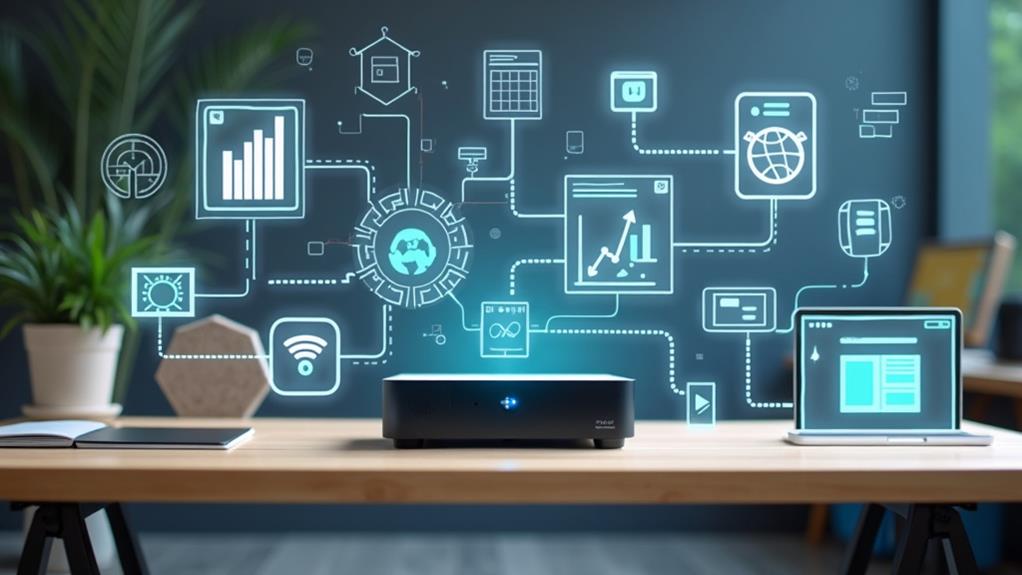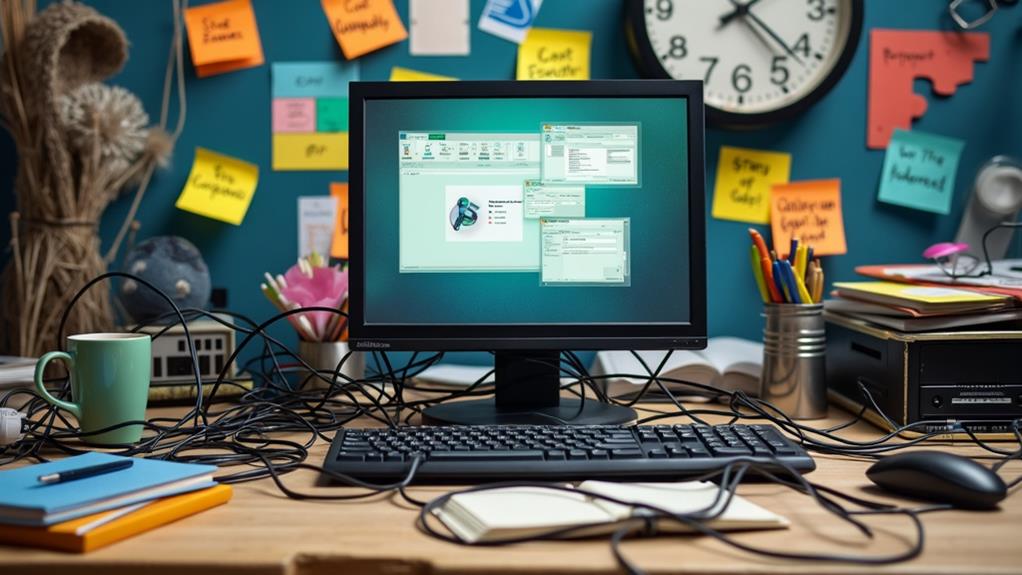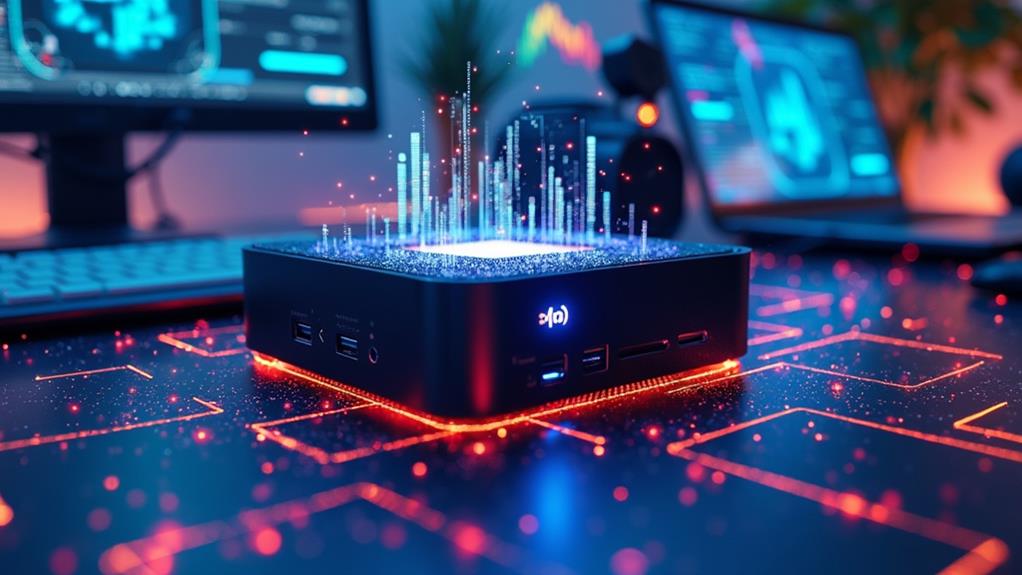



Curious about the capabilities of mini PCs compared to traditional desktop computers? This article explores the question: “Is a mini PC as good as a normal PC?” Delve into the world of compact computing as we examine the performance, versatility, and convenience of mini PCs, and discover if they truly measure up to their larger counterparts. Whether you’re a tech enthusiast or simply in the market for a new computer, join us as we uncover the potential of these pint-sized powerhouses.
Understanding Mini PCs
Definition of a mini PC
A mini PC, also known as a small form factor PC or compact PC, is a computer that is significantly smaller in size compared to a traditional desktop computer. It is designed to provide the same level of functionality and performance as a normal PC, but in a more compact and portable form. mini PCs are typically small enough to fit in the palm of your hand or be mounted behind a monitor, making them suitable for various uses, including home entertainment, office work, and even gaming.
Components of a mini PC
Despite their smaller size, mini PCs encompass all the essential components found in a normal PC. These components include a motherboard, central processing unit (CPU), memory (RAM), storage (hard drive or solid-state drive), graphics card, power supply, and various ports for connecting peripherals. Mini PCs often come as pre-built systems, meaning all the necessary components are already integrated into a single unit, making them convenient and easy to set up.
Varieties of mini PCs
There is a wide range of mini PCs available in the market, each catering to different needs and requirements. Some mini PCs are purpose-built for specific applications, such as media streaming, while others offer more powerful hardware configurations for demanding tasks like gaming or video editing. Additionally, mini PCs may differ in terms of operating systems, with options for Windows, Linux, or even Android-based systems. The variety of mini PCs ensures that there is a suitable option for every user, regardless of their intended use or budget.
Understanding Normal PCs
Definition of a normal PC
A normal PC, also referred to as a traditional desktop PC, is the standard form factor for personal computer systems. These PCs are typically larger and have more space for expansion, allowing for greater customization and upgrade options. Normal PCs come in tower or desktop cases, which house all the necessary hardware components. They provide a wide array of capabilities and can handle various tasks, ranging from simple web browsing and office work to demanding applications like gaming or professional content creation.
Components of a normal PC
A normal PC consists of the same core components as a mini PC, including a motherboard, CPU, RAM, storage, graphics card, power supply, and connectivity ports. However, due to their larger form factor, normal PCs often offer more room for expansion slots and drive bays, allowing users to add additional components as needed. This flexibility makes normal PCs suitable for power users, gamers, and professionals who require high-performance hardware or want to customize their system to meet specific requirements.
Varieties of normal PCs
Normal PCs come in various configurations and designs, offering options for different use cases and preferences. Tower PCs are the most common form, with ample space for expansion and cooling, making them ideal for gaming or tasks that demand intensive processing power. All-in-one PCs, on the other hand, integrate the display and other components into a single unit, providing a more compact and streamlined design suitable for offices or areas with limited space. Additionally, normal PCs are available in different price ranges, ensuring accessibility for users with varying budgets.

Comparing the Sizes
Size of a mini PC
One of the most distinct advantages of mini PCs is their compact size. They are designed to have a smaller footprint, making them perfect for areas with limited space or for users who prioritize portability. Mini PCs can easily fit on a desk, be mounted behind a monitor, or even be carried in a backpack. Their small size allows for greater flexibility in terms of placement and transport, making them an excellent choice for those who need a computer that can be easily moved between different locations or integrated into existing setups without taking up much space.
Size of a normal PC
In contrast, normal PCs are generally larger in size and occupy more physical space. Tower PCs, in particular, have a bulkier form factor and require a dedicated space on or under a desk. All-in-one PCs offer a more streamlined design by integrating the components into the display, but they still take up more desk space than mini PCs. The size difference between normal PCs and mini PCs can be significant, especially in environments where space optimization is crucial or when mobility is a priority.
Advantages and disadvantages of smaller size
The smaller size of mini PCs brings several advantages. Firstly, it allows for greater flexibility when it comes to placement options. You can easily position a mini PC in a variety of locations, such as in a living room entertainment setup, attached to the back of a monitor, or even mounted on a stand behind a TV. Secondly, their portability makes it convenient to carry them from one place to another, making mini PCs a popular choice for individuals who frequently travel or need to work in different locations.
However, the smaller size of mini PCs also comes with certain trade-offs. The compact form factor limits the amount of space available for adding additional components or upgrading hardware. While many mini PCs offer some level of upgradability, it may not be as extensive as that of normal PCs. Additionally, the smaller size can lead to potential heat dissipation challenges, as the compact enclosure may not provide enough ventilation for heavy workloads, requiring careful consideration of cooling solutions.
Effect of size on performance
The size of a computer does not directly determine its performance capabilities. Both mini PCs and normal PCs can achieve similar levels of performance depending on the hardware components they contain. The main difference lies in the potential for higher-end, enthusiast-grade components in larger normal PCs, which can support more demanding tasks such as gaming or resource-intensive applications. Mini PCs, on the other hand, are typically equipped with hardware configurations optimized for general computing needs, offering a balance between performance and power efficiency.
It’s important to consider the intended use when evaluating the impact of size on performance. For tasks like web browsing, office work, media streaming, or basic content creation, mini PCs can easily handle these requirements without any noticeable performance difference compared to normal PCs. However, for tasks that require significant processing power, such as 3D modeling, video editing, or gaming at high settings, a normal PC with a larger form factor may offer more horsepower and better thermal management to ensure optimal performance and longevity.
Comparing the Performances
Performance capabilities of a mini PC
Mini PCs are designed to offer competent performance for everyday computing tasks. The performance capabilities of a mini PC primarily depend on the chosen hardware components, such as the CPU, RAM, and storage. Entry-level mini PCs usually feature low-power processors like Intel Atom or Celeron, with sufficient RAM to handle basic multitasking and lightweight applications. However, higher-end mini PCs can be equipped with more powerful processors, such as Intel Core i5 or i7, and larger RAM capacities, enabling them to handle more demanding workloads and even some gaming.
When it comes to graphics performance, mini PCs typically rely on integrated graphics solutions embedded within the CPU. While these integrated graphics can handle casual gaming or multimedia tasks, they are not suitable for high-end gaming or professional-grade graphics work. Some advanced mini PCs, though, may offer the option for dedicated graphics cards, providing a boost in graphics performance.
Performance capabilities of a normal PC
Normal PCs have greater potential for performance due to their larger form factor and the ability to accommodate high-end components. This makes them suitable for a wide range of applications, including gaming, video editing, virtual reality, and other resource-intensive tasks. In terms of CPUs, normal PCs offer more options, with a broader range of processors available, including high-performance models such as Intel Core i9 or AMD Ryzen processors. Additionally, normal PCs can accommodate larger RAM capacities, allowing for smoother multitasking and enhanced performance in memory-intensive applications.
Furthermore, normal PCs often provide options for dedicated graphics cards, offering much higher graphics processing capabilities compared to integrated graphics. These powerful graphics cards are essential for gamers or professionals who require high-quality visuals or plan to use virtual reality systems. The larger size of normal PCs also allows for better cooling solutions, which can help maintain consistent performance during prolonged use and heavy workloads.
Factors influencing the performance
Several factors influence the performance of both mini PCs and normal PCs. Firstly, the choice of CPU plays a crucial role in determining overall performance. Newer generations of processors offer increased performance and efficiency, often resulting in faster system responsiveness and better multitasking capabilities. Additionally, the amount of RAM installed impacts performance as it affects the system’s ability to handle multiple tasks simultaneously and store data for quick access.
Storage type and capacity also contribute to overall performance. Solid-state drives (SSDs) offer significantly faster read and write speeds compared to traditional hard disk drives (HDDs), resulting in improved boot times and faster data transfer. Opting for larger SSD capacities or utilizing multiple drives in RAID configurations can further enhance performance by increasing storage bandwidth.
Lastly, software optimization and the operating system play a role in performance. Efficiently coded software that can take advantage of available hardware resources will yield better overall performance. Regular system maintenance, including software updates and disk cleanups, ensures a smoothly running PC regardless of its form factor.

Comparing the Cost
Cost of a mini PC
Mini PCs are available at various price points, allowing users to choose a model that aligns with their budget and requirements. Entry-level mini PCs with modest hardware specifications, such as a low-power CPU, minimal RAM, and lower storage capacity, are generally more affordable. These budget-friendly options are suitable for basic computing tasks like web browsing, document processing, or media streaming.
However, as you move up to higher-end mini PCs with more powerful processors, larger RAM capacities, and better graphics performance options, the cost increases accordingly. Such mini PCs can offer performance comparable to mid-range normal PCs and are priced accordingly. Mini PCs designed specifically for gaming or professional content creation can be quite expensive, as they are equipped with specialized hardware components optimized for demanding tasks.
Cost of a normal PC
Normal PCs encompass a wide range of price options, catering to various budgets and performance requirements. Entry-level desktop PCs typically feature basic components and are priced affordably, making them suitable for everyday computing needs. These budget options often provide a good balance between price and performance for tasks such as web browsing, emailing, and document processing.
However, as you move towards higher-end normal PCs, the cost increases. These systems offer more powerful processors, larger RAM capacities, dedicated graphics cards, and additional features for gamers, professionals, or power users. High-performance normal PCs designed for gaming or resource-intensive applications can come at a premium price due to the inclusion of top-of-the-line hardware components.
Cost-effectiveness of mini and normal PCs
Determining the cost-effectiveness of mini PCs versus normal PCs depends on individual needs and preferences. Mini PCs are generally more cost-effective for basic computing tasks, as they provide sufficient performance at a lower price point. They are ideal for users who prioritize compactness, portability, and a more budget-friendly option.
On the other hand, normal PCs offer better cost-effectiveness for users who require higher-performance systems. They provide greater scalability and the potential for future upgrades, making them a worthwhile investment for individuals who engage in resource-intensive tasks or plan to use their computers for gaming, content creation, or other demanding applications.
Ultimately, the cost-effectiveness of mini PCs or normal PCs comes down to finding the right balance between budget, desired performance, and intended use.
Accessibility and Portability
Portability of mini PCs
Portability is one of the key advantages of mini PCs. With their compact size and lightweight design, mini PCs are highly portable and allow users to bring their computing power wherever they go. These mini PCs can be easily transported to different locations, making them popular among digital nomads, frequent travelers, and individuals who require a portable computing solution.
Additionally, mini PCs often offer a range of connectivity options, including Wi-Fi and Bluetooth, allowing for seamless wireless connectivity to other devices such as monitors, keyboards, and mice. Some mini PCs also feature VESA mount compatibility, enabling them to be attached to the back of a monitor or TV, further enhancing their portability and minimizing clutter.
Portability of normal PCs
In comparison, normal PCs have limited portability due to their larger size and design. These desktop systems are not as easily movable and require proper setup and disassembly if relocation is necessary. Tower PCs, in particular, can be heavy and cumbersome to transport, often requiring assistance or specialized carrying cases.
However, all-in-one PCs offer a more portable alternative to traditional tower PCs. These PCs integrate the components into the display, creating a more streamlined and portable design. All-in-one PCs are relatively easier to move around and set up in different locations, making them suitable for users who desire a degree of portability while still retaining the power and functionality of a regular PC.
Accessibility features in mini and normal PCs
Both mini PCs and normal PCs strive to provide accessibility features that cater to a wide range of users. These features ensure that individuals with disabilities or specific accessibility needs can use and interact with the computer effectively. Accessibility options can include screen magnification, text-to-speech functionality, high-contrast display settings, keyboard shortcuts for navigation, and compatibility with various assistive technologies.
Many operating systems, including Windows and macOS, offer built-in accessibility settings, allowing users to customize their PC experience according to their needs. Additionally, manufacturers often provide software or hardware solutions to further enhance accessibility, such as specialized keyboards, speech recognition software, or eye-tracking technology.
Both mini PCs and normal PCs can accommodate these accessibility features, ensuring inclusivity and enabling individuals with disabilities to fully utilize the computer’s capabilities.

Comparing Power Consumption
Power consumption of a mini PC
Mini PCs are designed to be energy-efficient, consuming less power compared to their normal PC counterparts. The smaller size and compact hardware configurations of mini PCs contribute to their lower power requirements. They often utilize low-power processors, optimized for efficiency and reducing overall energy consumption without sacrificing performance for everyday tasks.
Moreover, mini PCs often employ solid-state drives (SSDs) instead of traditional hard disk drives (HDDs). SSDs are more energy-efficient and have faster access times, contributing to overall power savings. Additionally, the reduced cooling requirements of mini PCs further contribute to their energy efficiency.
Power consumption of a normal PC
Normal PCs, especially high-performance systems, tend to consume more power compared to mini PCs. This is primarily due to their larger form factor and the inclusion of more powerful components that demand higher power consumption. Normal PCs are generally equipped with larger, higher-wattage processors, dedicated graphics cards, and multiple storage drives, all of which contribute to increased power requirements.
Traditional tower PCs often have more room for cooling solutions, such as larger fans and heatsinks, which can also consume additional power. Additionally, the power supply unit (PSU) in normal PCs is typically stronger to cater to the needs of more power-hungry components.
Energy efficiency in mini and normal PCs
When it comes to energy efficiency, mini PCs generally have the upper hand due to their smaller size and optimized hardware configurations. By using less energy, they contribute to reducing both electricity bills and environmental impact. This makes mini PCs an attractive option for users who prioritize power savings and environmentally friendly computing solutions.
Normal PCs, however, can still achieve a certain level of energy efficiency depending on the hardware components chosen and how the system is utilized. Opting for power-efficient components, such as low-power processors, SSDs, and energy-certified power supplies, can help in reducing power consumption. Additionally, practices such as putting the PC into sleep mode when not in use and properly configuring power-saving settings can further enhance energy efficiency regardless of the form factor.
Looking at Storage Capabilities
Storage capacity of a mini PC
Mini PCs offer a range of storage options, providing sufficient capacity for various use cases. They typically come with solid-state drives (SSDs) as the primary storage medium, which offer faster data access speeds, improved reliability, and lower power consumption compared to traditional hard disk drives (HDDs). The storage capacity of mini PCs can vary depending on the model and configuration, ranging from as low as 64GB up to several terabytes.
Smaller-capacity mini PCs are suitable for basic computing tasks, such as web browsing, document processing, or media streaming. However, if you require more storage space for larger files, such as extensive multimedia libraries or resource-intensive applications, opting for a mini PC with larger SSD capacity or external storage options, such as USB drives or network-attached storage (NAS), is recommended.
Storage capacity of a normal PC
Normal PCs offer a wider range of storage capacity options compared to mini PCs. Due to their larger form factor, they can accommodate multiple storage drives, including both SSDs and HDDs, allowing for more extensive storage configurations. Depending on the system’s configuration, normal PCs can include multiple drives, including high-capacity HDDs for mass storage purposes and SSDs for faster boot times and frequently accessed files.
This flexibility in storage options makes normal PCs suitable for users with high storage requirements, such as gamers, content creators, or those dealing with large data sets. It allows for easy expansion or customization by adding additional drives or utilizing RAID configurations for increased performance or data redundancy.
Expandable storage options in mini and normal PCs
Both mini PCs and normal PCs offer expandable storage options for users who require additional storage capacity. Mini PCs often provide additional storage options through USB ports, allowing you to connect external drives or utilize USB flash drives to expand storage at a relatively low cost. Some mini PCs also feature SD card slots, enabling easy expansion through removable storage media.
Normal PCs, with their larger form factor and expandability, provide more extensive options for adding storage. These systems often have multiple drive bays and expansion slots, allowing users to install additional SSDs or HDDs to meet their storage needs. This increased capacity and expandability make normal PCs well-suited for users who require high-capacity storage for large files, gaming libraries, or multimedia content.
Analyzing Upgrade and Customization Possibilities
Upgrade possibilities for mini PCs
Mini PCs typically offer a degree of upgradability, although it may be more limited compared to normal PCs due to size constraints. Upgrades for mini PCs usually involve replacing or adding components within the defined space available. RAM upgrades are relatively straightforward, as most mini PCs have accessible RAM slots that allow for easy memory expansion or replacement.
Storage upgrades in mini PCs can include replacing the existing storage drive with a higher-capacity SSD or expanding storage by adding external drives through USB or network connections. Some mini PCs may also allow for CPU upgrades, although this may require more advanced technical expertise and careful consideration of cooling capabilities to ensure proper temperature management.
Graphics card upgrades in mini PCs are more challenging due to space restrictions and power requirements. While some advanced mini PCs may offer the option for dedicated graphics cards, this may require sacrificing other components or adopting a more compact form factor.
Upgrade possibilities for normal PCs
Normal PCs excel in terms of upgradability, offering extensive customization options to meet individual needs. With their larger form factor and more spacious interiors, normal PCs allow for easy installation and removal of components. Users can easily upgrade or replace hardware components like CPU, RAM, storage drives, graphics cards, and power supplies.
CPU upgrades in normal PCs can involve replacing the existing processor with a higher-performance model, allowing users to keep up with advances in technology without entirely replacing the entire system. RAM upgrades are also straightforward, with more slots available to accommodate additional memory modules for increased multitasking capabilities.
Normal PCs provide ample space for multiple storage drives, giving users the option to expand storage capacity as needed. Additionally, due to their larger size and power supply capacity, normal PCs can accommodate more demanding graphics cards, making them ideal for gamers or professionals who require high-quality visuals or advanced graphics processing capabilities.
Customization options in mini and normal PCs
Both mini PCs and normal PCs offer customization options to varying degrees. Mini PCs, while constrained by size limitations, can still be customized to some extent. Users can often choose between different hardware configurations, such as CPU options, RAM capacities, and storage sizes, based on their specific needs and budget. Some mini PCs also offer the ability to choose between different operating systems, providing flexibility and customization at the software level.
Normal PCs, due to their larger size and expandability, offer significantly more customization options. Users can handpick specific components to build a system tailored to their requirements, such as choosing their preferred motherboard, CPU, RAM, storage, and graphics card. Additionally, the larger form factor of normal PCs enables users to customize the exterior appearance with different case designs, lighting options, and cooling solutions.
The ability to customize both mini PCs and normal PCs ensures that users can create a system that aligns with their preferences, requirements, and desired aesthetics.
Determining Ideal Use Cases
Common use cases for mini PCs
Mini PCs cater to a variety of use cases, thanks to their compact size, portability, and cost-effectiveness. Here are some common scenarios where mini PCs excel:
Home Entertainment: Mini PCs are ideal for media streaming, providing a compact and sleek device that can easily connect to a TV or home theater system. They can handle streaming services, local media playback, and even support 4K video output for a seamless home entertainment experience.
Office Work: Mini PCs can serve as efficient workstations for basic office tasks like word processing, spreadsheet management, email, and web browsing. They take up minimal space on a desk and can easily connect to monitors, keyboards, and mice, providing a clutter-free work environment.
Digital Signage and Kiosks: Mini PCs’ small form factor and ability to mount behind displays make them suitable for digital signage solutions or interactive kiosks. They can power displays for advertising, information boards, or interactive touchscreens, offering a reliable and space-efficient solution.
Education and Learning: Mini PCs can be utilized in educational settings, providing compact and portable systems for students and teachers. They can support e-learning platforms, multimedia presentations, and classroom management tools while taking up minimal desk space.
IoT and Embedded Systems: Mini PCs can be used as the computing backbone for IoT (Internet of Things) applications or embedded systems. Their small size and energy-efficient capabilities make them suitable for projects requiring low power consumption and space optimization.
Common use cases for normal PCs
Normal PCs, with their larger form factor and more extensive performance capabilities, cater to a broader range of use cases. Here are some common scenarios where normal PCs excel:
Gaming: Normal PCs are the go-to choice for gamers who require high-performance hardware to run the latest games smoothly. They offer more options for upgrading components, supporting powerful graphics cards, and providing optimal thermal management for extended gaming sessions.
Content Creation and Multimedia Production: Normal PCs provide the horsepower needed for tasks like video editing, graphic design, and 3D modeling. Their higher-performance processors, dedicated graphics cards, and ample storage options enable professionals to work with large files, render complex visuals, and handle resource-intensive applications.
Professional Workstations: Normal PCs are well-suited for demanding professional tasks such as architectural design, engineering simulations, financial modeling, or software development. Their versatility and expandability allow professionals to customize the system to their specific requirements and harness the computing power necessary for their work.
Virtual Reality and Augmented Reality: To fully experience virtual reality (VR) or augmented reality (AR) applications, a normal PC offers the necessary performance and graphics capabilities. These advanced technologies require powerful components to provide immersive and realistic experiences, making a normal PC a crucial component of a VR or AR setup.
Home Servers and NAS: Normal PCs can be repurposed as home servers or network-attached storage (NAS) systems, providing convenient centralized data storage, media streaming, file sharing, and backup solutions. In a home or small office network environment, a normal PC can act as a reliable hub for various digital services.
Selecting the right PC for your needs
Choosing between a mini PC and a normal PC depends on your individual needs, preferences, and budget. Consider the following factors when deciding which type of PC is the ideal choice for you:
Intended Use: Determine the primary use of the PC. If you require a portable and space-saving solution for simple tasks or media consumption, a mini PC is a suitable choice. However, if you seek high-performance capabilities for gaming, content creation, or professional work, a normal PC would better meet your needs.
Budget: Set a budget range based on your financial capacity. Mini PCs generally offer more affordable options for basic computing needs, while normal PCs provide flexibility for high-performance configurations at a higher cost. Find a balance between price and performance that fits your budget.
Upgradability and Customization: Consider whether you plan to upgrade or customize your PC in the future. If flexibility and expandability are essential, a normal PC offers more options for component upgrades and customization. However, if you prefer a more compact and ready-to-use system with limited upgrade potential, a mini PC may be a better fit.
Space and Portability: Evaluate the available space and portability requirements. Mini PCs are ideal for small spaces, travel, or areas with limited desk real estate. Normal PCs are suitable for users who have dedicated desk space or require a more stationary computing solution.
Performance Demands: Assess the level of performance required for your specific tasks. If you engage in resource-intensive activities like gaming, video editing, or virtual reality, a normal PC’s greater processing power and graphics capabilities would provide a smoother experience. For basic tasks such as web browsing, document processing, or media streaming, a mini PC can easily fulfill these requirements.
By considering these factors, you can make an informed decision and select the PC that best suits your needs, allowing you to maximize productivity, enjoy multimedia content, and unleash the full potential of your computing experience.
Disclosure: As an Amazon Associate, I earn from qualifying purchases.









